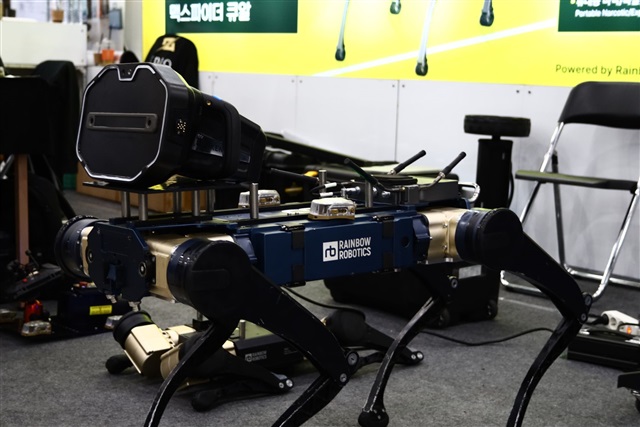As generative AI tools like ChatGPT capture global attention, a new frontier is emerging—physical AI, or artificial intelligence that can interact with the real world. While large language models are skilled at understanding and reasoning with words, they fall short when it comes to responding to real-world events in real time.
Language models can interpret and reason, but they struggle with instantaneous decision-making in unpredictable physical settings. "If you ask ChatGPT to guide a walking robot, it may analyze, generate a command, and then issue it—but by then, the robot may have already tripped over an obstacle," said Park Jung-jun, director of the AIDIOS Research Institute, during a recent keynote at the K-AI Community Summit.
Park pointed out that tasks such as grasping objects, avoiding collisions, or folding laundry require more than high-level AI reasoning—they demand integration with high-speed sensors, real-time feedback control systems, and precision actuators. These systems, designed to bridge the digital and physical worlds, are collectively referred to as physical AI.
Current AI limitations in physical environments
Despite rapid advances in visual recognition and motion planning, today's AI systems remain largely ill-equipped to perform tasks that require millisecond-level motor control and sensor feedback interpretation—capabilities essential for physical interactions such as dodging an oncoming pedestrian or adjusting the fold of a piece of clothing with precision.
Even highly automated platforms like Tesla's Robotaxi still rely on conventional feedback control loops for motor and steering functions. While AI may determine acceleration and route decisions, execution remains slow by physical AI standards. Few current robotic systems fully meet the criteria for true physical AI.
Tech giants race to bridge digital-physical gap
Global companies are addressing this challenge by integrating large language models with physical control systems. Google DeepMind has created robotic technologies that can pack bento boxes, and its Gemini model is designed to control robotic arms through voice commands, enabling the execution of complex tasks like looping a rubber band around a gear while dynamically adjusting angle and force.
Nvidia is contributing through simulation, creating virtual training environments where AI models can learn behaviors before transitioning to physical deployment. Meanwhile, startups like Physical Intelligence are targeting household robotics, emphasizing fluid motion and contextual understanding of everyday living spaces.
South Korea bets on defense robotics advantage
In South Korea, the spotlight is on defense applications. AIDIOS, originally a research group, spun off in 2021 and has since focused on explosive ordnance disposal (EOD) robotics. Leveraging 3D X-ray reconstruction technology, the company is building the technical foundations for high-performance physical AI. AIDIOS is also partnering with Rainbow Robotics, a Samsung Electronics affiliate, to develop quadruped robots capable of handling hazardous materials and dismantling explosives—part of its vision to become a "life-saving defense company."
Park believes South Korea, despite lagging in language model development, holds strategic potential in physical AI thanks to its robust manufacturing base and field-tested operational expertise. Traditional domains such as welding, automotive assembly, and EOD procedures provide a rich training ground for physical AI systems. The nation's ability to digitize artisanal skills and transfer them to AI systems may prove to be a decisive factor in the global AI race.

Quadruped robot co-developed by AIDIOS and Rainbow Robotics. Credit: DIGITIMES
Article edited by Jerry Chen




